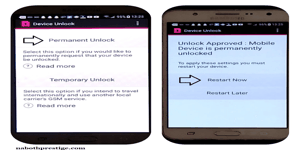Mobile connectivity has come a long way since the early days of mobile phones that could only make voice calls. The introduction of 3G allowed for relatively modest Internet browsing speeds, while 4G significantly improved data download speeds. Today, 5G is poised to revolutionize mobile device connectivity. However, what is the real impact of 5G on our smartphones, tablets, and other mobile devices? In this article, we will explore the advantages and challenges of 5G for mobile connectivity.
In this tutorial, I will teach you everything about 5G
Disclaimer: I am not responsible for any damage that may occur.
5G: What Is It?
Advantages of 5G
Potential Applications of 5G
Challenges Related to 5G
The summary of 5G
5G: What Is It?
5G, short for the fifth generation, is the latest iteration of mobile communication standards. It promises data download and upload speeds much faster than 4G, but it is also designed to cater to a broader range of connectivity needs, including device-to-device communication (IoT), virtual reality (VR), augmented reality (AR), and more. 5G uses higher frequencies than its predecessors, enabling it to carry more data at faster speeds.
Advantages of 5G for Mobile Devices
- Enhanced Download and Upload Speeds: 5G offers significantly faster download and upload speeds compared to 4G. While 4G can provide speeds of up to 100 Mbps, 5G can deliver speeds ranging from 100 Mbps to 10 Gbps or even higher. This allows users to download large files, stream high-definition videos, and upload content quickly and seamlessly.
- Low Latency: One of the standout features of 5G is its ultra-low latency, which is the time it takes for data to travel from the sender to the receiver and back. With 5G, latency is reduced to just a few milliseconds. This is crucial for applications that require real-time communication, such as online gaming, video conferencing, and remote surgical procedures. The low latency ensures an almost instantaneous response, making these activities smoother and more immersive.
- Increased Capacity: 5G networks can handle a significantly larger number of connected devices simultaneously. This is particularly important as the Internet of Things (IoT) continues to grow. IoT devices, such as smart thermostats, wearable fitness trackers, and connected home appliances, can all benefit from the improved capacity of 5G networks, ensuring they remain responsive and reliable even in densely populated areas.
- Improved Connectivity in Crowded Areas: In crowded urban areas or at large events like concerts and sports games, 4G networks can become congested, leading to slow data speeds and dropped connections. 5G’s higher capacity and efficiency mean that users can expect more consistent and reliable connectivity even in such challenging environments.
- Better Streaming and Content Consumption: With 5G, streaming high-quality content on mobile devices becomes a seamless experience. Users can watch 4K and even 8K videos without buffering delays. This is especially appealing for those who use their smartphones and tablets as entertainment hubs.
- Future-Proofing: 5G is designed to meet the growing demand for data and connectivity well into the future. As new technologies and applications emerge, 5G networks will be able to support them without the need for major infrastructure upgrades. This future-proofing is essential in a rapidly evolving tech landscape.
- Enhanced Augmented and Virtual Reality: Augmented reality (AR) and virtual reality (VR) applications benefit greatly from the low latency and high speeds of 5G. This opens up new possibilities for immersive gaming, educational experiences, and practical applications like remote training and virtual tourism.
- Efficient Energy Usage: While delivering higher performance, 5G also aims to be more energy-efficient compared to previous generations. This is particularly important as the number of connected devices continues to grow, and energy conservation becomes a priority.
- Global Connectivity: 5G is being rolled out globally, which means that international travelers can expect consistent and high-speed connectivity, making it easier to stay connected and productive while abroad.
These advantages collectively make 5G a transformative technology for mobile devices, promising faster, more reliable, and more versatile connectivity that can support a wide range of applications and drive innovation across various industries.
Potential Applications of 5G for Mobile Devices
- Virtual Reality (VR) and Augmented Reality (AR):
- Immersive Experiences: 5G’s low latency and high speeds enable smoother and more immersive VR and AR experiences. This is not limited to gaming but extends to education, training, remote collaboration, and virtual tourism.
- Mixed Reality: With 5G, users can seamlessly blend digital information with their physical surroundings, opening up new opportunities for interactive and educational applications.
- Connected Health (mHealth):
- Remote Monitoring: 5G facilitates real-time health data monitoring through wearable devices. Patients can transmit vital signs and health metrics to healthcare providers, enabling remote patient monitoring and timely interventions.
- Telemedicine: High-quality video calls and low latency make telemedicine more effective, allowing doctors to remotely examine patients and provide consultations with precision.
- Autonomous and Connected Vehicles:
- Advanced Driver Assistance Systems (ADAS): 5G enables ADAS to function more efficiently by providing real-time data on road conditions, traffic, and nearby vehicles. This enhances safety features such as adaptive cruise control and lane-keeping assistance.
- V2X Communication: Vehicle-to-Everything (V2X) communication becomes more reliable and efficient with 5G, enabling connected vehicles to exchange data with traffic infrastructure, pedestrians, and other vehicles for safer and more efficient transportation.
- Smart Cities:
- Traffic Management: 5G enables smart traffic lights and monitoring systems to optimize traffic flow and reduce congestion.
- Public Safety: Public safety agencies can use 5G for enhanced communication, including real-time video surveillance and coordination during emergencies.
- Environmental Monitoring: 5G can support environmental sensors that monitor air quality, noise levels, and other parameters to improve urban sustainability.
- Industrial IoT (IIoT):
- Factory Automation: Manufacturing plants can use 5G to create smart factories with real-time monitoring and control of machines and processes, leading to increased efficiency and reduced downtime.
- Predictive Maintenance: 5G allows for the continuous collection and analysis of data from industrial equipment, enabling predictive maintenance to prevent breakdowns.
- Gaming and Entertainment:
- Cloud Gaming: With 5G, cloud gaming services become more accessible and responsive, allowing players to stream high-end games to their mobile devices without the need for powerful local hardware.
- Enhanced Live Streaming: Content creators can produce and stream high-quality videos in real time, offering audiences a more engaging and immersive experience.
- Education and Training:
- Remote Learning: 5G enhances remote education by enabling high-quality video lectures, virtual labs, and interactive learning experiences.
- Training Simulations: Industries like aviation, healthcare, and manufacturing can use 5G for realistic training simulations, improving skill development and safety.
- Retail and E-commerce:
- Augmented Shopping: Retailers can implement AR experiences to enhance the in-store shopping experience, allowing customers to try products virtually before making a purchase.
- Efficient Supply Chains: 5G-connected devices and sensors can help retailers optimize inventory management and logistics, reducing costs and ensuring product availability.
- Public Services:
- Emergency Response: Emergency services can benefit from 5G’s low latency for real-time communication and coordination during disasters and critical incidents.
- Smart Utilities: 5G enables utilities to remotely monitor and manage infrastructure, leading to more efficient use of resources and improved service reliability.
These applications represent just a fraction of the potential use cases for 5G in mobile devices. The combination of high-speed, low-latency connectivity with the ability to support a massive number of devices simultaneously opens up a world of possibilities for innovation and improved quality of life across various sectors.
Challenges and Concerns Related to 5G
- Infrastructure Deployment:
- Costly Infrastructure: The rollout of 5G networks involves significant costs, including the installation of new antennas, upgrading existing infrastructure, and laying high-capacity fiber optic cables. These expenses can be a barrier to rapid deployment, particularly in rural or less densely populated areas where the return on investment may be lower.
- Security:
- Cybersecurity Threats: With the proliferation of connected devices and increased data transmission, the attack surface for cyber threats widens. Securing 5G networks and the vast array of connected devices is a critical challenge.
- Supply Chain Vulnerabilities: Concerns have arisen about the security of 5G equipment and components sourced from different countries. Supply chain vulnerabilities can potentially compromise the integrity of networks.
- Health Concerns:
- Electromagnetic Radiation: Some individuals and organizations have expressed concerns about potential health risks associated with exposure to the higher-frequency millimeter waves used by 5G. However, scientific consensus has not established a direct causal link between 5G radiation and adverse health effects.
- Privacy:
- Data Privacy: The increased connectivity facilitated by 5G raises concerns about the privacy of personal data. As more devices collect and transmit data, there is a need for robust data protection measures and privacy regulations.
- Location Tracking: 5G networks can be used for more precise location tracking, which has implications for user privacy and surveillance concerns.
- Interference and Spectrum Allocation:
- Spectrum Congestion: As more devices and applications vie for limited radio spectrum resources, congestion and interference issues can arise. Efficient spectrum allocation and management are critical to ensure optimal network performance.
- Coexistence with Existing Services: 5G networks must coexist with existing services, such as radio and satellite communications, without causing interference. Regulatory bodies and industry stakeholders need to work together to ensure compatibility.
- Digital Divide:
- Uneven Access: The deployment of 5G may initially focus on urban and densely populated areas, potentially exacerbating the digital divide. Rural and underserved regions may have limited access to the benefits of 5G technology.
- Affordability: High-speed 5G services and devices may come at a premium cost, making them less accessible to economically disadvantaged populations.
- Environmental Impact:
- Energy Consumption: The increased number of connected devices and infrastructure required for 5G may lead to higher energy consumption. There is a need for energy-efficient solutions and renewable energy sources to mitigate environmental impact.
- E-Waste: The rapid turnover of mobile devices and network equipment may contribute to electronic waste (e-waste) concerns. Proper recycling and disposal of obsolete equipment are essential.
- Regulatory and Legal Challenges:
- Spectrum Licensing: Regulating and allocating spectrum for 5G can be complex and require coordination among governments and regulatory bodies.
- Legal and Liability Issues: The use of autonomous vehicles and IoT devices connected via 5G may raise legal and liability questions in the event of accidents or malfunctions.
- Consumer Adoption and Education:
- Device Compatibility: Not all existing devices are 5G compatible, requiring consumers to upgrade their smartphones and other devices to access 5G benefits.
- Educating Consumers: There is a need to educate consumers about the capabilities, advantages, and potential risks of 5G to ensure they make informed decisions and use the technology responsibly.
Addressing these challenges and concerns requires collaboration among governments, telecommunications providers, technology companies, and regulatory bodies. Striking a balance between innovation and risk mitigation is essential to ensure the successful deployment and responsible use of 5G technology.
To complete the discussion about 5G
5G promises to revolutionize mobile device connectivity by offering unmatched download speeds, reduced latency, and the ability to connect a large number of devices simultaneously. The potential applications of 5G are vast, ranging from virtual and augmented reality to connected health and smart cities. However, it also comes with challenges such as costly infrastructure, security, health, and privacy concerns.
As 5G continues to roll out globally, it is essential to closely monitor its impact on society and the economy. 5G has the potential to transform how we live, work, and interact with our environment, but it will also require thoughtful management to address legitimate concerns related to its deployment. Overall, 5G promises to bring significant changes to mobile connectivity, and its impact will continue to be a crucial topic of discussion in the years to come.
Share on:






